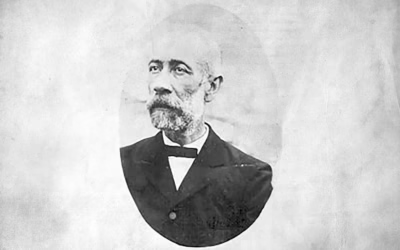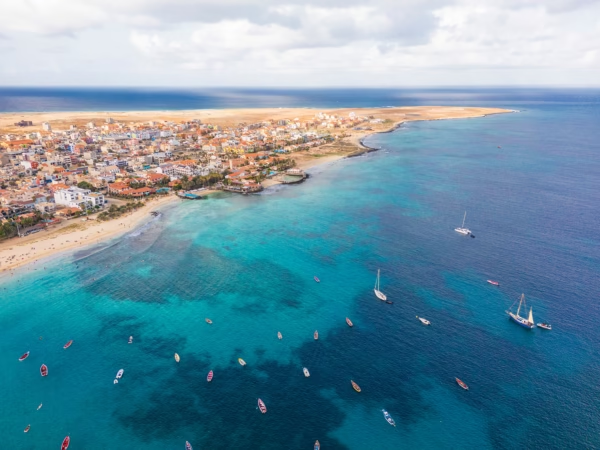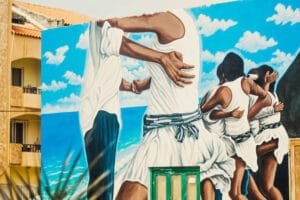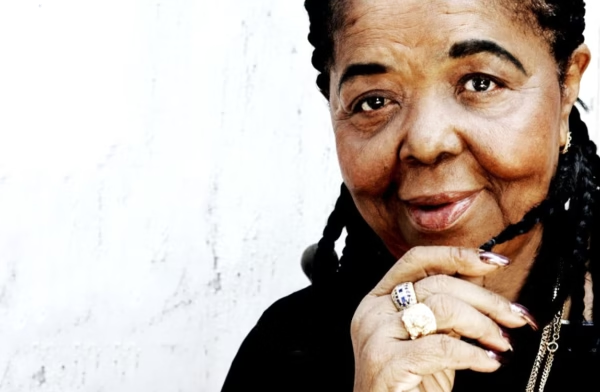Cape Verdean Funaná: the Magic of Forbidden Rhythms
The Accordion Revolution:
How Cape Verde’s Funaná Conquered Colonial Oppression
When the Accordion Met Africa
The older man’s fingers fly across the accordion keys with the speed of someone half his age. Victor Tavares, known to everyone as Bitori, is 81 now, but when he plays, the years fall away. In a packed Lisbon club, the crowd — a mix of Cape Verdean immigrants and curious Europeans — moves as one organism to the relentless 2-beat rhythm. A young man scrapes a knife against an iron bar held vertically against his shoulder, producing a metallic heartbeat that drives the music forward. This is funaná, and for decades, playing it could land you in a Portuguese colonial jail.
“They said we were too African, too primitive,” Bitori tells me backstage, his weathered hands still cradling the accordion he saved two years of his life to buy. “But we knew better. This music — it was our heartbeat, our identity. They could take our drums, but they couldn’t take our spirit.”
The story of funaná is one of the most remarkable tales of musical resistance in the Atlantic world. When Portuguese colonisers introduced the diatonic accordion to Santiago Island in the early 20th century, hoping to spread European musical culture among the peasant population, they inadvertently handed Cape Verdeans the weapon that would help define their independence struggle. What emerged was neither Portuguese nor purely African, but something entirely new — a sound so infectious, so defiantly joyful, that colonial authorities banned it outright, viewing it as a dangerous symbol of rebellion.
The Origins of Cape Verde’s Forbidden Music
An Instrument of Acculturation Becomes Liberation
According to oral tradition, funaná emerged in Santiago’s mountainous interior around the turn of the 20th century, when Portuguese authorities began importing accordions as cheap substitutes for church organs. The colonisers hoped these instruments would help “civilise” the rural population, teaching them proper Portuguese folk songs, such as the malhão and corridinho. The plan backfired spectacularly.
Instead of adopting Portuguese melodies, the Badiu people of Santiago’s interior — descendants of escaped slaves who had maintained strong African traditions — transformed the accordion into something uniquely their own. They paired it with the ferrinho, an iron bar scraped with a knife, which provided the rhythmic foundation, creating a sound that was neither European nor African, but distinctly Cape Verdean.
The name “funaná” itself remains mysterious. Some say it combines the names of two legendary figures: Funa, an accordion player, and Naná, his wife, who played the ferrinho. Others trace it to “fungagá” or “fandango,” suggesting thoroughly Africanized European dance origins. What’s certain is that by the 1920s, funaná had become the dominant music of Santiago’s poor villagers, serving as the soundtrack to their celebrations and struggles.
Sugarcane and Sweat
The rhythm of funaná is heard in the repetitive motions of agricultural labour. Machetes are swinging regularly when cutting sugarcane. The corn is pounding. The steady rhythm of fieldwork defines the lives of most rural Cape Verdeans. Unlike the melancholic morna that emerged in urban settings, funaná was pure kinetic energy, music designed to make tired bodies forget their exhaustion and dance.
“Funaná comes from the earth,” explains ethnomusicologist Tim Seiber from the University of Massachusetts-Boston. “It’s the sound of people who had nothing but their labour and their community, creating joy from the simplest materials — an accordion and a piece of iron.”
The dance that accompanied funaná was equally provocative to colonial sensibilities. Partners embraced with one arm while holding hands with the other, their hips moving in quick, alternating knee flexions that colonial authorities deemed inappropriately sensual. During peak popularity, men and women would push their hips together, moving sensually in sync with the beat — a display of African-influenced physicality that scandalised the Portuguese so thoroughly they made the music illegal.
Colonial Suppression and Underground Survival
The Price of Playing Forbidden Rhythms
By the 1940s, under Portugal’s fascist Estado Novo regime, funaná faced systematic suppression. The music was banned after 8 PM, and any lyrics criticising Portuguese rule resulted in immediate arrest. Musicians caught performing funaná in urban centres faced jail time and often torture. The accordion could be confiscated, and repeat offenders faced extended imprisonment in Tarrafal, Santiago’s notorious concentration camp that housed political prisoners from across Portugal’s African colonies.
“You had to be very careful,” recalls Maria Santos, now 78, who grew up in Santiago during the colonial period. “We would post lookouts during parties. If someone spotted the PIDE [Portuguese secret police], the accordion would disappear, and suddenly we’d all be singing church hymns.”
The colonial authorities’ fear wasn’t unfounded. Funaná lyrics, delivered in Cape Verdean Creole rather than Portuguese, contained coded messages of resistance. Songs spoke of the “famine of ’47” that killed thousands while Portuguese administrators did nothing, of forced labour in the roças (plantations), of families torn apart by economic migration. The music evolved into a form of underground journalism, disseminating news and preserving cultural memory beyond colonial control.
Bitori’s Dangerous Journey
The lengths musicians went to preserve funaná reveal its cultural importance. In 1954, a 16-year-old Victor Tavares embarked on a journey that would become legendary. Unable to afford the 750 escudos for an accordion in Cape Verde — an astronomical sum for a rural labourer — he sailed to São Tomé and Príncipe, where he laboured for two years in the notorious roças.
“I worked in the plantations, then as a barber, saving every escudo,” Bitori recalls. “I ate the minimum, wore the same clothes until they fell apart. That accordion was my dream, my obsession.”
When he finally returned to Santiago in 1959 with his precious instrument, the two-month sea journey had given him time to master it entirely through self-teaching. He developed a style that would revolutionise funaná — a blazing, infectious approach that caught the attention of his entire generation. But he had to play in secret, always aware that his music could land him in Tarrafal.
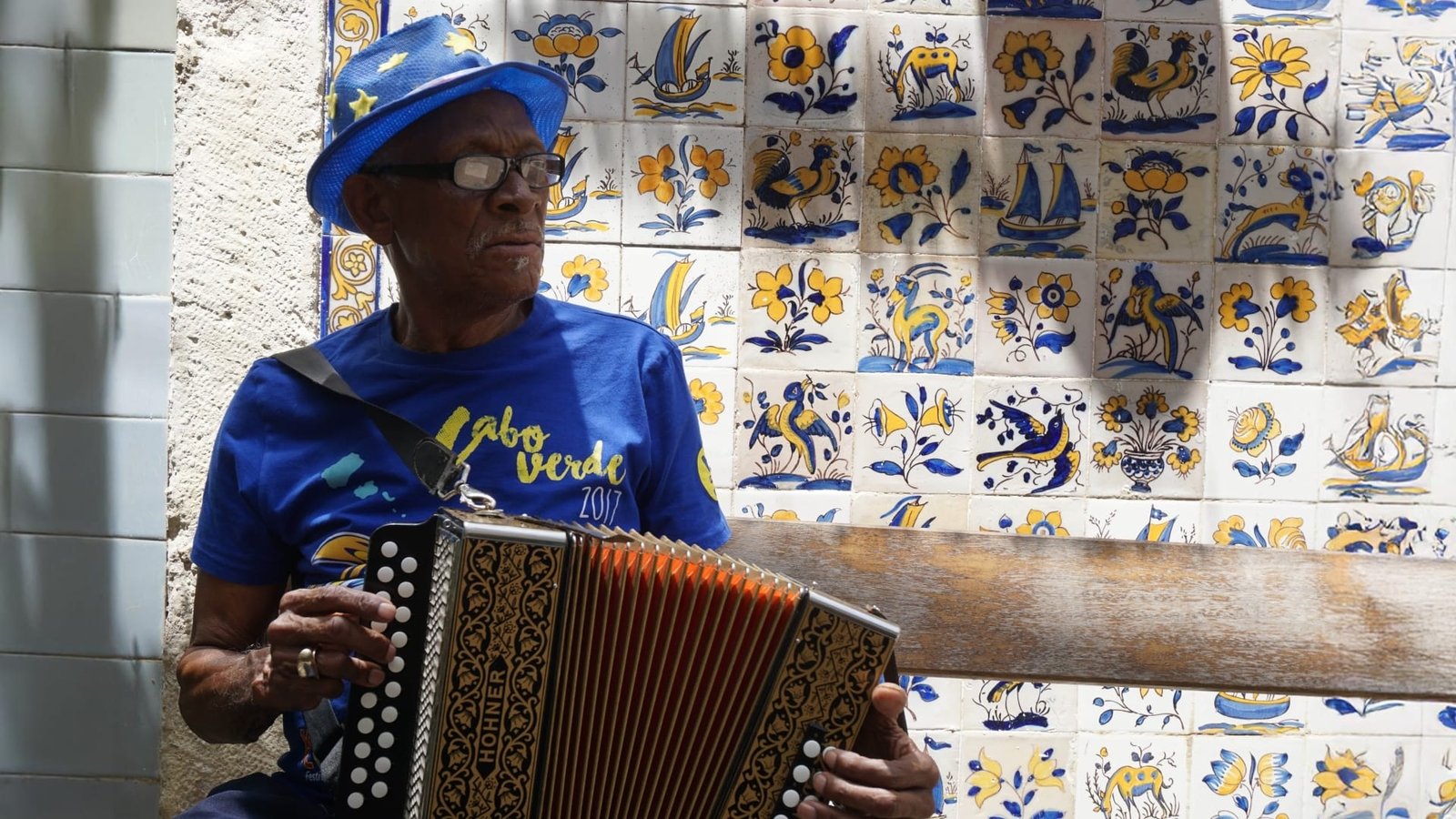
The Cultural Revolution of Independence
From Hidden Valleys to National Stages
Cape Verde’s independence in 1975 marked a significant turning point in its history. What had been forbidden suddenly became celebrated as an authentic expression of Cape Verdean identity. The new government, led by the African Party for the Independence of Guinea and Cape Verde (PAIGC), actively promoted indigenous cultural forms that the Portuguese had suppressed.
Yet funaná’s transition from a rural tradition to a national symbol wasn’t immediate. Urban elites, educated in Portuguese schools, still viewed it as primitive music of the uneducated masses. The accordion-based sound seemed embarrassingly rural compared to the sophisticated morna that Cesária Évora would later make world-famous.
Katchás and the Electric Revolution
The transformation of funaná from rural folk music to a national phenomenon required a visionary, and that visionary was Carlos Alberto Martins, known as Katchás. An agronomist by training with a background in jazz and classical music, Katchás had spent time in Paris and Lisbon before returning to Cape Verde after the country gained independence.
Working in Santiago’s interior, Katchás immersed himself in traditional funaná, studying with masters like Codé di Dona and Sema Lopi, who had never recorded their music. In 1978, he formed Bulimundo, a band that would revolutionise Cape Verdean music by electrifying funaná without losing its essential character.
“Everyone thought we were crazy,” Katchás told journalists in 1980. “We had always been taught that funaná was an inferior genre. There was a complex to overcome.”
Bulimundo’s Revolutionary Sound
Drinking from the Source
Bulimundo’s innovation wasn’t simply adding electric guitars and synthesisers to traditional rhythms. Katchás and his collaborators studied funaná’s polyrhythmic structure, understanding how the ferrinho’s scraped patterns interlocked with the accordion’s diatonic melodies. They translated these elements into modern instruments. Ferrinho’s rhythm was adapted to a drum kit and bass. And the accordion’s melodic lines were reimagined on a synthesiser and electric guitar.
The band’s debut album was released through Rotterdam’s Black Power Records in 1980, sending true shockwaves through Cape Verde. Their songs, like for example “Sema Lopi”, took traditional compositions and transformed them into something that could fill a modern dance floor while maintaining their authenticity. Thanks to it, young Cape Verdeans in Praia and Mindelo could dance to their grandparents’ music without feeling embarrassed.
“Bulimundo didn’t just modernise funaná,” says Cape Verdean journalist Carlos Gonçalves. “They validated it, proved it could stand alongside any music in the world. This was the biggest achievement in the evolution of Cape Verdean music.”
The Nationalist Soundtrack
Bulimundo’s success reflected the nationalist fervour of Cape Verde’s early independence years. Funaná became the soundtrack of a new nation asserting its African identity after centuries of Portuguese colonialism. Politicians hired funaná bands for rallies, and what had been hidden in Santiago’s valleys now echoed from government buildings.
The impact extended beyond Cape Verde. The massive Cape Verdean diaspora — larger than the islands’ population — embraced electrified funaná as a connection to home. In Rotterdam, Boston, and Lisbon, funaná parties became spaces where immigrants could assert their identity and maintain cultural bonds across ocean distances.
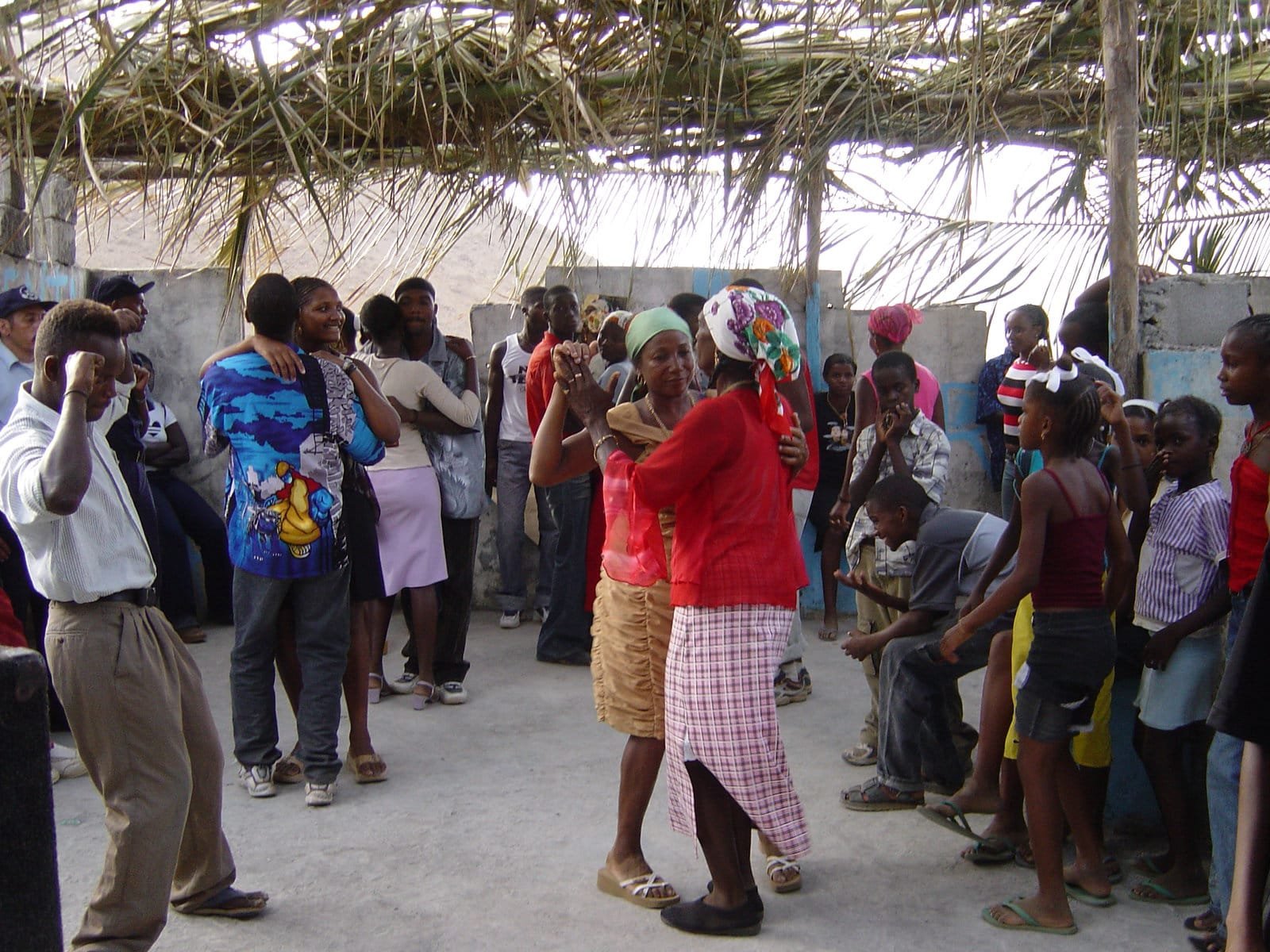
The International Breakthrough
Finaçon and the World Stage
The 1990s brought funaná to international attention through Finaçon, a band formed by former Bulimundo members. Signing with a French record label, they attempted to market funaná as the next lambada. This strategy ultimately failed because it ignored the music’s cultural depth in favour of commercial appeal.
More successful was the return to roots that coincided with this. Ferro Gaita, formed in 1996, brought back the traditional accordion as the lead instrument while maintaining modern rhythm sections. Their name—combining the words ‘ferrinho’ and ‘gaita’—signalled their intention to honour tradition while embracing evolution.
Codé di Dona: The People’s Composer
Central to funaná’s authenticity was Codé di Dona (Gregório Vaz, 1940-2010), a farmer from São Domingos who became the genre’s most important composer. Unlike urban musicians, Codé lived the life he sang about—agricultural work, rural poverty, and historical trauma. His masterpiece “Fomi 47” memorialised Cape Verde’s devastating 1947 famine, ensuring that colonial neglect wouldn’t be forgotten.
“Codé di Dona interpreted the deepest feelings of the Cape Verdean soul,” President Pedro Pires said after the composer died in 2010. His image now graces the 1000-escudo banknote, a farmer-musician finally receiving national recognition.
The Accordion Master’s Late Triumph
Bitori Records at 59
Despite being funaná’s most skilled traditional accordionist, Bitori didn’t enter a recording studio until 1997, at the age of 59. The album that resulted, recorded with singer Chando Graciosa, is considered by many Cape Verdeans as the most excellent funaná album ever made.
The recording captured something raw and essential that modernised versions had lost. Backed only by Grace Evora’s drums and Danilo Tavares’s bass, Bitori’s accordion work displayed four decades of development in isolation, a pure style uninfluenced by commercial pressures.
“When I finally recorded, I wasn’t thinking about markets or labels,” Bitori says. “I was thinking about my grandfather, about the men who couldn’t play their music freely. This was for them.”
The album remained unknown outside Cape Verde until 2016, when Germany’s Analog Africa label released it worldwide as “Legend of Funaná: The Forbidden Music of the Cape Verde Islands.” Suddenly, at 78, Bitori found himself touring European festivals, his forbidden music finally free.
The Sweet Pain of Synthesisers
One of funaná’s strangest chapters involves a beautifully crazy, persistent myth about synthesisers being washed ashore in the 1960s. The story goes that a ship bound for a Rio de Janeiro music expo, carrying Moog and Korg synthesisers, wrecked near São Nicolau island. Revolutionary leader Amílcar Cabral is said to have ordered the instruments distributed among the people, sparking the evolution of funaná’s electronic style.
While historically dubious, the myth captures a truth about Cape Verdean music: its ability to transform imposed technologies into tools of expression and liberation. Just as the accordion was meant to spread Portuguese culture, it became the voice of funaná. Similarly, modern synthesisers became vehicles for cultural preservation rather than westernisation.
“There’s a cunning strength in taking your overlord’s tools and turning them against them,” notes filmmaker Joe Fletcher, who documented the synthesiser myth. “The accordion was introduced to popularise Portuguese music. Instead, it became the sound of independence.”
Modern Funaná and its Global Reach
From Santiago to the World
Today’s funaná exists in multiple forms simultaneously. In Santiago’s interior, traditional players still perform with acoustic accordion and ferrinho at local celebrations. In Praia’s nightclubs, DJs mix electronic funaná — now called “kutxi pó” — at speeds approaching 300 BPM. In Lisbon’s Cape Verdean neighbourhoods, bands blend funaná with hip-hop, creating new hybrid forms of music.
Artists like Dino D’Santiago, born in Portugal to Cape Verdean parents, represent the newest evolution of funaná. His 2018 album “Mundu Nôbu” slowed funaná to 90 BPM, adding layers of electronic production while maintaining the genre’s essential polyrhythmic structure. The album topped Portuguese charts, introducing funaná to audiences who’d never heard of Cape Verde.
“We’re creating one unique sound from all the Portuguese-speaking countries,” D’Santiago explains. “But funaná remains the root, the rhythm that connects us to the land.”
Madonna
Funaná received unexpected global attention in 2019 when Madonna, living in Lisbon, encountered the music through Cape Verdean musicians. While her incorporation of batuku on “Madame X” received more attention, her interest validated Cape Verdean music’s international relevance, bringing funding and recognition to traditional musicians of the islands, who’d struggled in obscurity.
The Politics of Preservation
National Heritage Status
In April 2024, Cape Verde officially recognised funaná as national heritage, acknowledging its role in preserving cultural memory. This designation came together with funding for education programs designed to ensure young Cape Verdeans learn their musical history.
Yet tensions remain between traditionalists and modernisers. Purists argue that electronic funaná loses the music’s essential connection to agricultural life and the struggles it entails. Modernisers counter that evolution ensures survival, that funaná must speak to contemporary experiences to remain relevant.
“Every generation thinks the next is ruining tradition,” laughs Zeca di Nha Reinalda, who’s performed funaná for five decades. “My grandfather thought accordions were foreign corruption. Now they’re tradition. Music lives by changing.”
The Role of Diaspora
Cape Verde’s diaspora, scattered across four continents, plays an important role in the evolution and preservation of funaná. In New Bedford, Massachusetts, Cape Verdean Americans continue to maintain traditional funaná circles, while their children create hip-hop-infused funaná fusions. In Rotterdam, home to Europe’s largest Cape Verdean community, funaná nights draw thousands, generating income that supports musicians in Cape Verde’s capital, Santiago.
Digital platforms have transformed transmission. YouTube videos of traditional funana performances are reaching millions of views. WhatsApp groups share new compositions worldwide. The music that once spread through secret gatherings now travels at the speed of light between people of all continents.
Ferrinho’s Persistence
One element remains unchanged throughout funaná’s evolution. The ferrinho. This simple iron bar, scraped with a knife to produce rhythm, appears in every iteration from traditional to electronic. It’s funaná’s DNA, the sound that immediately identifies the music as Cape Verdean.
“You can synthesise accordion, program drums, add whatever modern production you want,” explains producer Branko, who’s worked with numerous funaná artists. “But without ferrinho, it’s not funaná. That scraping sound — it’s like the music’s backbone.”
The ferrinho appears on Cape Verde’s 1000-escudo note, a recognition of its cultural importance. Musicians speak of it almost mystically, as if this simple tool carries the genre’s entire history in its metallic scrape.
Teaching the Next Generation
In Santiago’s schools, children now learn funaná as part of cultural education. They start with the ferrinho — anyone can scrape metal — before graduating to accordion. These programs, funded in part by UNESCO initiatives, ensure the transfer of traditional knowledge to new generations.
“We’re not trying to freeze funaná in amber,” explains Carla Monteiro, who runs a youth music program in Praia. “We teach the traditional forms so kids understand their roots. Then they take it wherever their creativity leads.”
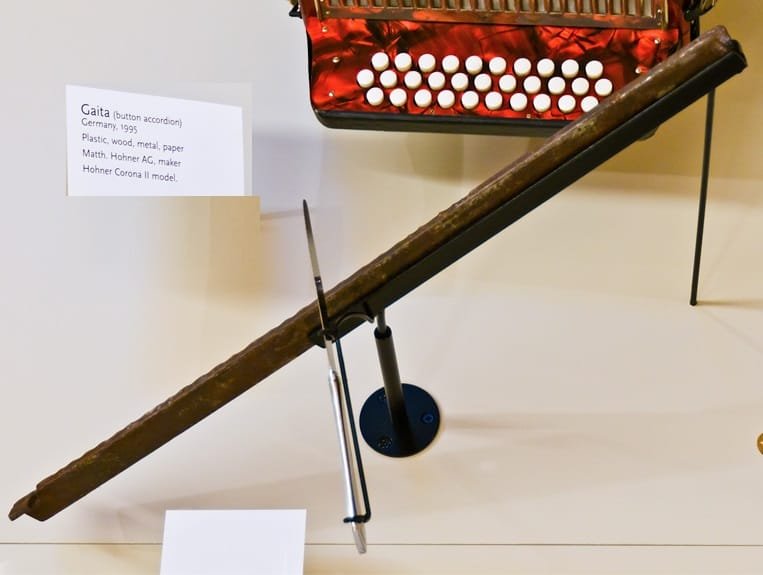
Modern Funaná: Challenges and Opportunities
The Streaming Economy
Funaná faces the same challenges as other traditional music genres worldwide. How to survive in a streaming economy that pays fractions of cents per play. Traditional musicians who spent decades perfecting their craft struggle, while DJs mixing funaná beats earn thousands at European festivals.
Luckily, some artists have found creative solutions. Ferro Gaita crowdfunded their recent album through Cape Verdean diaspora networks. Bitori’s European tours, organised at the age of 80, provided an income impossible through recorded music sales. Young artists like Scúru Fitchádu blend funaná with punk and metal, creating sounds aggressive enough to break through the noise of algorithmic filters.
Climate Change and Cultural Change
Cape Verde’s increasing droughts — climate change intensifying the islands’ historical water scarcity — drive continued emigration. Each departing family takes musical knowledge with them. Santiago’s rural communities, the heartland of funaná, are largely empty as young people seek opportunities elsewhere.
Yet crisis has always sparked creativity in Cape Verdean music. New funaná songs address contemporary struggles, including unemployment, immigration bureaucracy, and family separation due to economic necessity. The music once protested colonialism. Now, it stands against neoliberalism. And by that, it maintains its role as the voice of the marginalised.
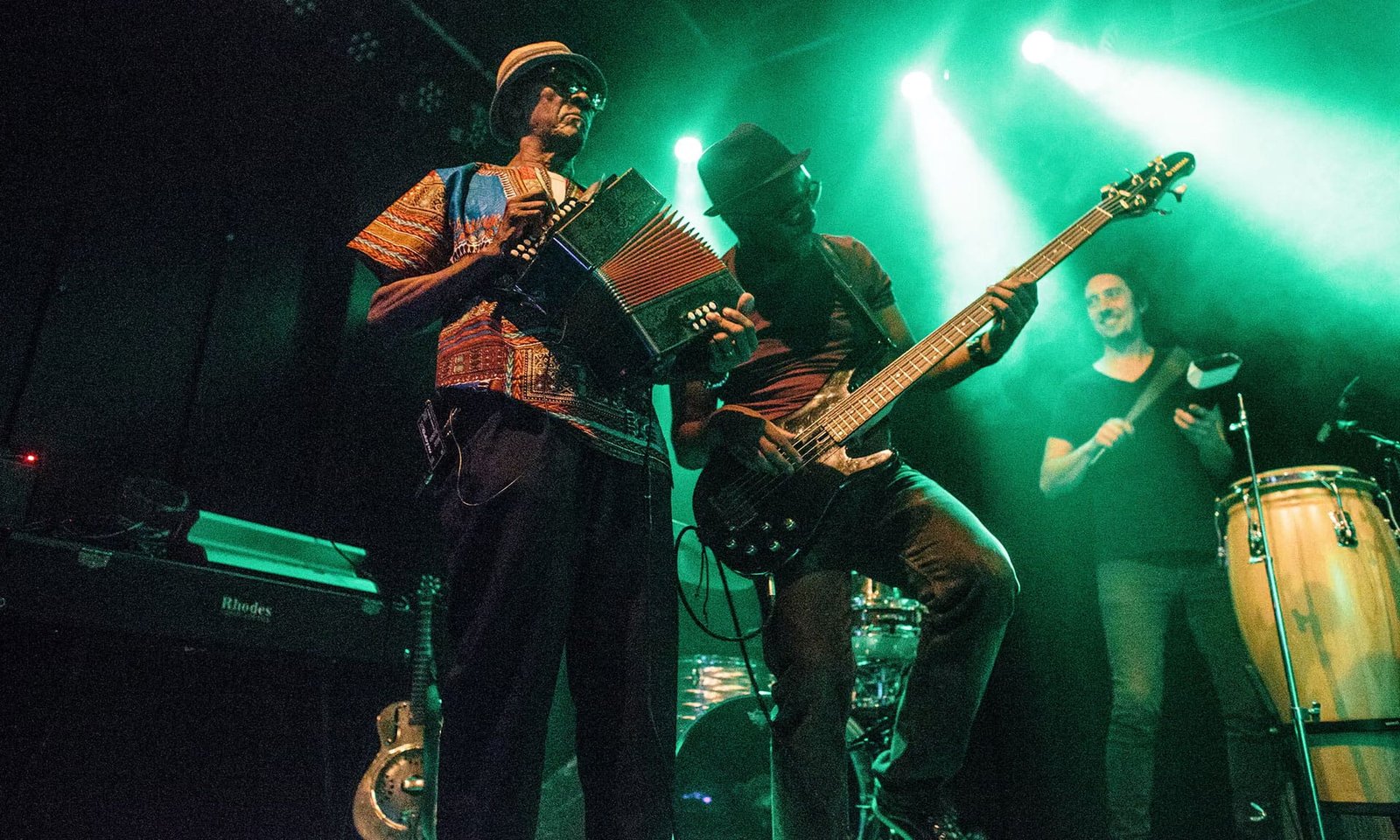
Funana’s Beating Heart
Stand in that Lisbon club. Observe Bitori’s ancient fingers dance across the accordion keys while young Cape Verdeans film on their smartphones. Feel that vibe in the air. You’ll immediately understand that funaná represents more than just a musical tradition. It’s proof that oppressed peoples will always find ways to assert their humanity, that creativity flourishes under persecution, and that joy itself can be a form of rebellion.
The Portuguese introduced the accordion, hoping to civilise the “primitive” Africans of Santiago. Instead, those Africans created a music so powerful that it helped soundtrack their independence, so infectious that it conquered dance floors from Praia to Paris, and so resilient that it survived decades of suppression to emerge triumphant.
“This music saved us,” Bitori says simply, packing his accordion after the show. “When we had nothing — no freedom, no rights, no hope — we had funaná. It reminded us we were human, that we deserved better. Every time we played, we were saying: we exist, we matter, we will be free.”
Outside the club, Lisbon’s Cape Verdean quarter pulses with Saturday night energy. From apartment windows, different sounds emerge — traditional accordion, electronic beats, hip-hop bass — all recognizably funaná. In this multiplication of forms, the music fulfils its ultimate purpose: connecting a scattered people to their homeland, to their history, to each other.
The accordion that was meant to colonise became the instrument of liberation. The rhythm that was once banned has become a national heritage. The music of uneducated peasants conquered the world. In funaná’s triumph lies a lesson for all who face oppression: your joy is resistance, your culture is a weapon, your survival is victory.
As I walk through Lisbon’s streets, the ferrinho’s metallic scrape echoes from a dozen sources, that iron heartbeat that sustained a people through centuries of struggle. It continues still — insistent, defiant, unbreakable — the rhythm of a culture that refused to die, the sound of an accordion revolution that nobody saw coming but everybody now knows was inevitable.
Bibliography and Sources
- Cape Verdean Funaná: Voice of the Badius, Hurley-Glowa, S. University of Texas Rio Grande Valley, 1991.
- The Rough Guide to the Music of Cape Verde: Morna, Funaná, Coladeira, Stanton, P. (ed.). London: World Music Network / Penguin Books, 2001.
- Historical Dictionary of the Republic of Cape Verde, Lobban, R. A. & Lobban, M. A. Lanham, 2007.
- Decolonising Cape Verde through Funaná, Lima, C. Academia.edu, 2022.
- “African Music, Ideology and Utopia.” Nesbitt, N. Research in African Literatures, 2001.
- Field Research Reports on Cape Verdean Funaná, Hurley-Glowa, S. [Referenced in academic studies], 1997.
- “Music of Sweet Sorrow.” Turner, D. G. & Peterson, D. In World Music, Vol. 1: Africa, Europe and the Middle East. London: Rough Guides Ltd / Penguin Books, 2000.
- Funaná: traditional dance and music of Cape Verde on Casa di CV;
- Funaná on Wikipedia, the Free Encyclopedia;
- Bitori and Chando Graciosa on Grounds;
- Funaná Kotchi Po with Dju Di Mana and guests, Galeria Zé dos Bois (Photo);
- Independence: In Santiago, funaná was a daily act of insubordination against the colonial regime, Asemana;
- Inside Cape Verde Funaná, Cape Verde’s forbidden music, Belalgarve;
- Ferrinho on Organology.net (Photo);
